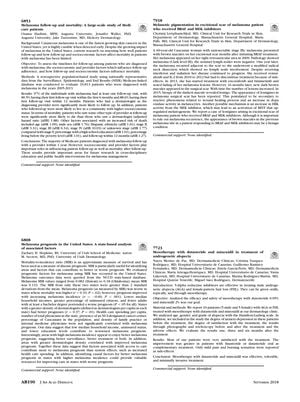Melanoma Prognosis in the United States: A State-Based Analysis of Associated Factors
August 2018
in “
Journal of The American Academy of Dermatology
”

TLDR Melanoma survival rates vary by state and are better where incomes are higher, more people have health insurance and education, and there are more dermatologists.
In the study titled "Melanoma prognosis in the United States: A state-based analysis of associated factors," researchers evaluated the mortality-to-incidence ratio (MIR) as a measure of melanoma survival across different states in the U.S. The study found that MIR values ranged significantly, with Hawaii having the lowest (0.082) and Oklahoma the highest (0.18). Factors such as lower median household incomes, higher percentages of uninsured citizens, and fewer adults with at least a bachelor's degree were associated with worse melanoma prognosis. Conversely, states with higher melanoma incidence rates had better prognoses, suggesting more effective surveillance and treatment. Additionally, a greater density of dermatologists in a state was correlated with improved prognosis. The study concluded that access to care factors, rather than healthcare system factors like overall spending, were more influential in melanoma prognosis. Identifying the causal factors for better prognosis in states with higher incidence could help improve care in states with worse outcomes. No commercial support was identified for this study.